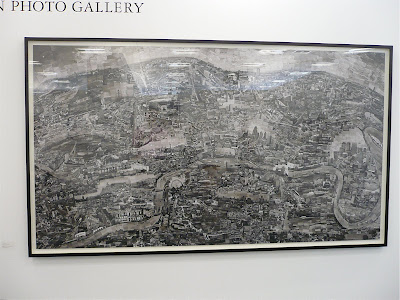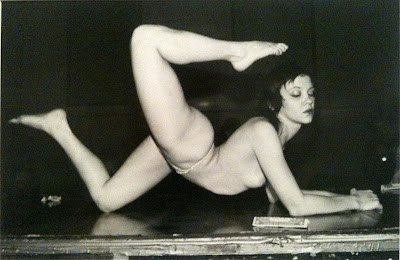
An interesting story by Lyndsey Parker from Yahoo's music blog:
While debate regarding unauthorized use of Facebook pics rages on, a photograph from the pre-digital age has gotten one indie group in some serious trouble. Former fashion model Ann Kirsten Kennis is suing buzz band Vampire Weekend for a cool $2 million, claiming a 1983 photo of her was used in their Contra album cover art without her consent.
Kennis, who currently resides in Fairfield, Connecticut, with her family, was reportedly very surprised to see her doe-in-headlights likeness in a preppy Polo shirt on the Contra cover, when her daughter showed her the disc earlier this year. "Her daughter came home one day and said, "Hi, Mom, see your picture?'" Kennis's lawyer, Alan Neigher, told Entertainment Weekly. Neigher also told EW that the photo was never intended for professional use. "It was taken by her family. It was a Polaroid, not a modeling picture," he insisted. "Her mother was a chronic Polaroid snapshot-taker, and used to sell whole archives of photographs to these shops, five bucks a hundred or whatever. Her mother may have given away to a charity bazaar a whole ream of photographs. We just really don't know...[Kennis] has no idea how that photograph got into the photographer's hands."
The photographer in question is Tod Brody, who along with Vampire Weekend's record label, XL Recordings, is also named in Kennis's $2 million misappropriation-of-identity lawsuit. See, Kennis claims Brody duped Vampire Weekend into believing he was the photographer who had shot the Polo pic, and that he forged her signature (as "Kirsten Johnson" in one spot and "Kirsten Johnsen" in another, Neigher says) on the photo's release form. Brody of course has denied this, telling EW: "Ms. Kennis's claim that I didn't take the photo is blatantly false. I took the photo in 1983. The photo was in my possession the entire time, for 26 years, until it was delivered to Vampire Weekend." (Incidentally, the photograph seems to have been removed from Brody's website, www.todbrodyphoto.com, although it was once included in the Portraits section under the file name "Kirsten.")
The band, who reportedly paid $5,000 to use the picture, have also issued their own formal statement: "As is standard practice, Vampire Weekend and XL Recordings licensed the rights to use the photo on the cover of Contra pursuant to a license agreement that contains representations and warranties authorizing this use of the photo. Now that a lawsuit has been filed, we look forward to having the matter resolved in court."
So there are several questions here. First, who took the photo--Kennis's mother or Tod Brody? And if it was the mom, then did Brody really forge Kennis's signature and claim he was the real photographer? And if so, how did he think he'd get away with such a scam, since it was inevitable that Kennis would eventually see the cover? (After all, the album did debut at number one on the Billboard album chart in January 2010, so it was hardly obscure.) Conversely, if it was Brody who took the pic, is it possible that Kennis failed to read the fine print and didn't realize she was signing away rights to the picture 27 years ago?
And finally, did Vampire Weekend have any responsibility--as Kennis alleges--to make sure the photo release form's signature was legit? It's unclear just how much the band knew about their cover model before this lawsuit; when asked about the girl in interviews at the time of Contra's release, they gave deliberately vague answers. Lead singer Ezra Koenig told MTV News: "We know where the image came from, but we're not being very specific about her. We don't know her or anything....there's just something infinitely fascinating about a nice portrait of somebody, especially when she's got this ambiguous look, and people can read a lot into it....It makes you realize how much you can imagine about somebody when you know nothing about them, based on only a few signifiers."
The mystery surrounding the enigmatic golden girl on the Contra cover continues, although not in the way Koenig may have imagined. Kennis retired from modeling years ago; additional photos of her, from either the past or present, professional or candid, are seemingly non-existent on the Web (even the profile pic on what appears to be her private Facebook page is a photo of a dog); and she's refused to speak to the press thus far (she did come to the phone when the Village Voice rang her recently, and was reportedly polite, but declined to be interviewed). Perhaps when the reclusive ex-model finally appears in court, we'll all find out the real story behind this now-infamous photograph.





 The pool and whirlpool at the Grand Hyatt.
The pool and whirlpool at the Grand Hyatt. My last breakfast at the hotel.
My last breakfast at the hotel.















.jpg)































